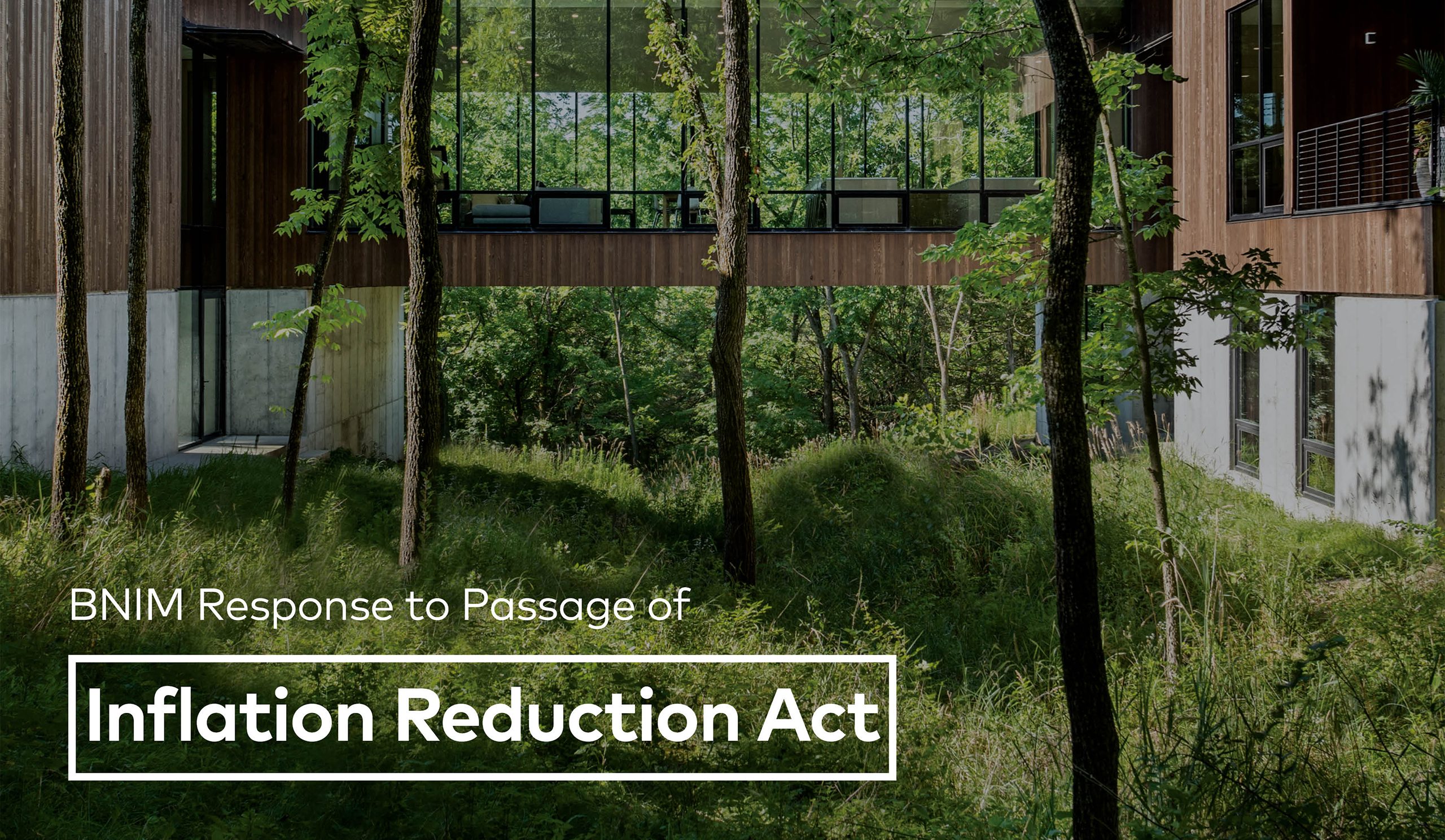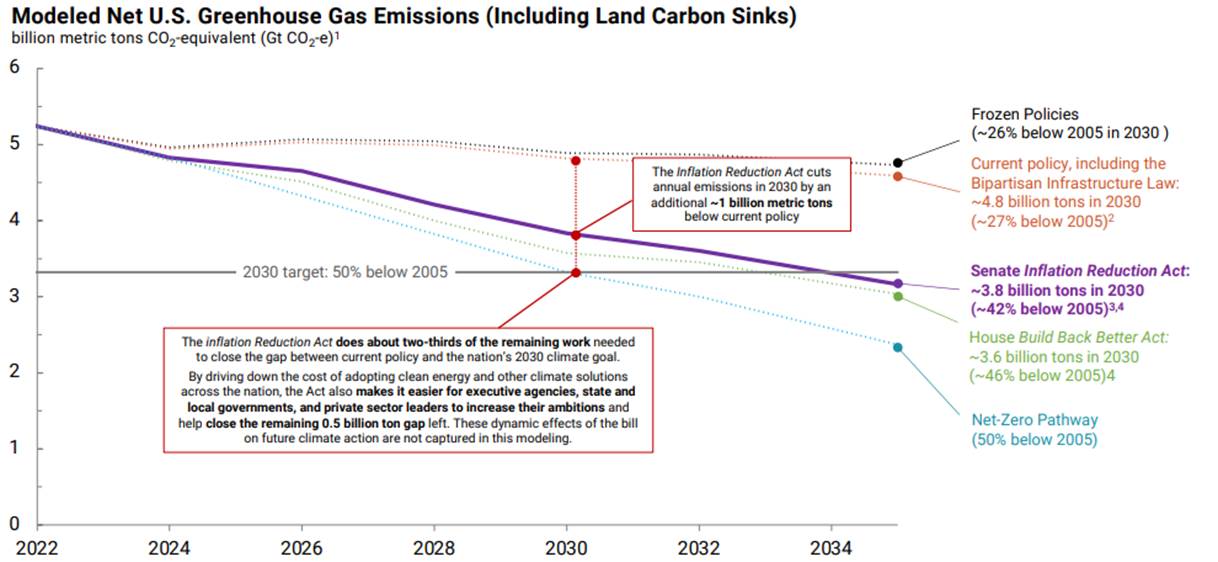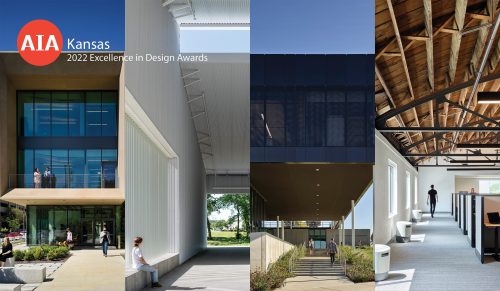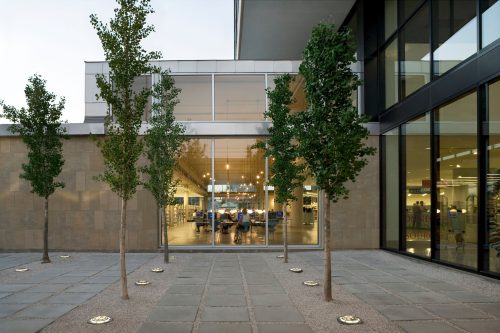Spotlight

Inflation Reduction Act – Closing the Carbon Gap
Inflation Reduction Act – Closing the Carbon Gap
BNIM joins the chorus of architects across the nation in celebrating the passage of the Inflation Reduction Act (H.R. 5376). This important law will accelerate the adoption of important carbon reduction strategies through investment in energy efficiency, equitable and affordable housing, and transitioning our economy towards a more just and resilient future that doesn’t rely on fossil-fuels. The IRA establishes clear financial rules and priorities focused on creating a framework for climate justice, quality jobs and worker protections, as well as direct investment to a wide range of topics: energy, transportation, buildings, manufacturing and industry, agriculture and forestry. Evergreen Action has developed and updated this detailed summary of specific impacts for reference.

Source: REPEAT, Princeton University Zero Lab
While this bill includes compromise, and is far from the end of Climate Change, the burden of local and individual action is better supported by clearer tools and rules to work within, lightening the load for cities, States, and the private sector. According to the REPEAT preliminary IRA report, this historic law estimates a resulting reduction in annual US emissions by approximately 40% or 1 billion metric tons by 2030, leaving about 0.5 billion tons for executive agencies, state and local governments, and the private sector to close to keep America on the path to Net Zero emissions by 2050.
Following the recent setbacks to climate commitments resulting from the disastrous SCOTUS West Virginia vs EPA ruling, BNIM recommended actions that every architect can take, emphasizing the impact of local and regional actions that our profession can spearhead. Putting these recommendations into collective action, we can use the IRA’s framework and incentives to improve the projects we touch and lead the way to close the remaining carbon gap.
Advocate
- Advocate for improved Energy Codes without weakening amendments locally, including the Zero Code appendix
- A current example of effective advocacy is in the City of Kansas City’s passage of Resolution 220596, adopting Kansas City Missouri’s Climate Protection & Resiliency Plan (CPRP), informed in part by the Climate Action Kansas City Regional Action Plan, to go beyond emissions reductions and develop climate justice and equity focused goals around mobility, energy supply, natural systems, homes and buildings, food, and waste & materials. BNIM staff, the AIA-KC, USGBC Central Plains, the Sierra Club, and many others helped develop the content of these plans and actively advocated for adoption.
- Push for performance requirements on public and publicly funded projects, especially affordable housing, using LEED certification to ensure a thorough and transparent process is followed
- Support improved public transportation and mobility plans, complete streets, and smart growth plans completed with public input and equity measures
Implement
- Sign the AIA’s Architecture & Design Materials Pledge, and then modify your product selection methods and specifications to give priority to products that disclose health, equity, ecosystem, climate, and economic impacts through third part reporting such as Environmental Product Declarations (EPDs) and Declare labels
- Regardless of the current energy code, work to implement the most current code with your project team, and talk to the owner about the benefits of using a known process and code for basic energy improvements. Go further by making every project EV-ready and PV-ready by sizing electrical rooms and panels for additional equipment, running conduit to the roof and parking lot locations, and confirming roof structural capacity for PV
- For total carbon reductions, just remember: Reuse, Reduce, Renewable
- Reuse existing buildings first – even if it’s just the structure and foundation
- Reduce energy loads through improved envelope design and efficient building systems
- Renewables to offset the remaining operational energy on site when possible
Educate
- Educate yourself on both the IRA details as well as on other opportunities to reduce carbon emissions and improve equity on your projects. There are new incentives that can directly benefit the design, construction, and development team for climate impacts on non-profit and NGO projects
- Educate your clients on opportunities to pursue the myriad of tax credits, grants, and other resources provided in the IRA or by your local utility or municipality
- Share what you’re learning through presentations within your company and with industry education partners such as the AIA and USGBC
With this bill now in place it’s time to take collective action in our local and regional communities using the IRA’s framework.
TO READ MORE ABOUT CLIMATE ACTION BEING TAKEN ON THE COMMUNITY LEVEL, CLICK HERE.

